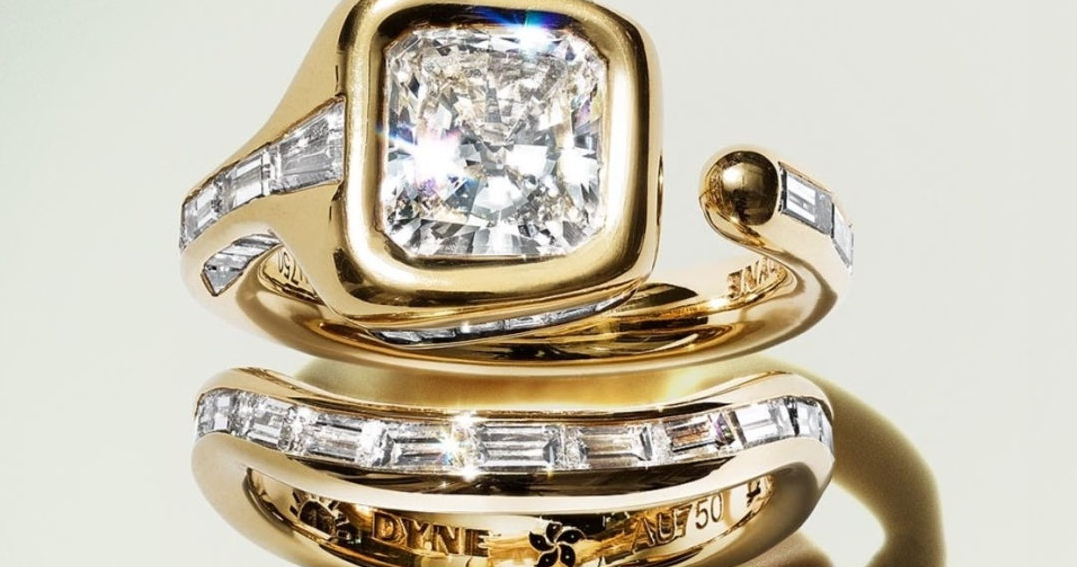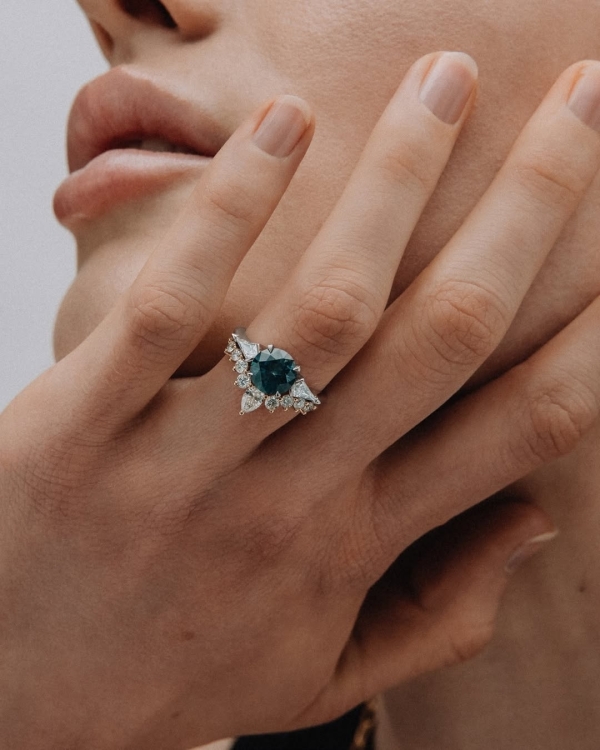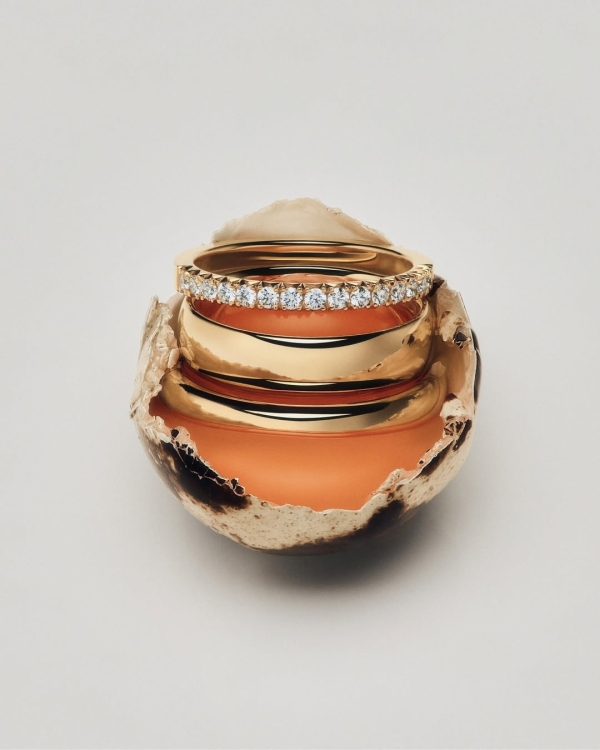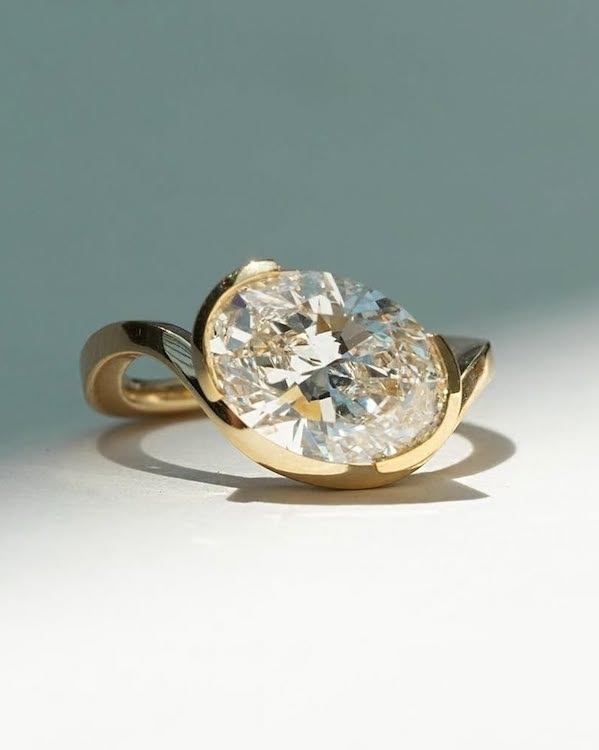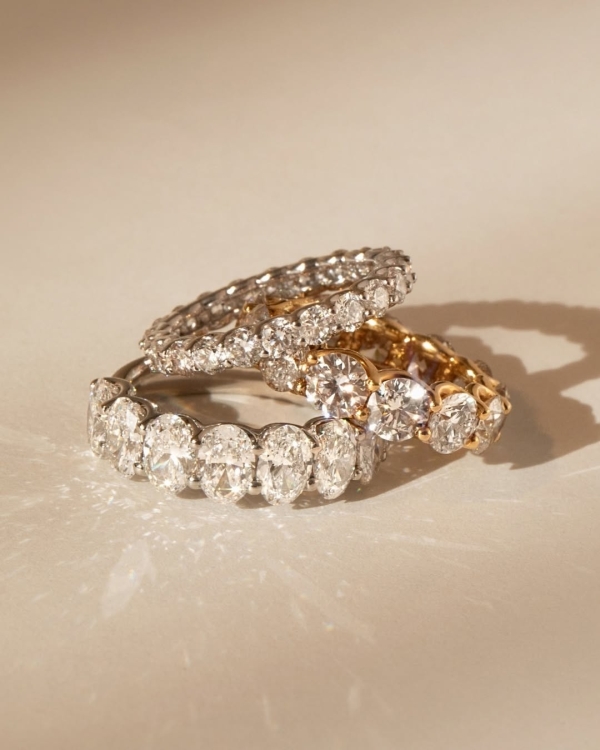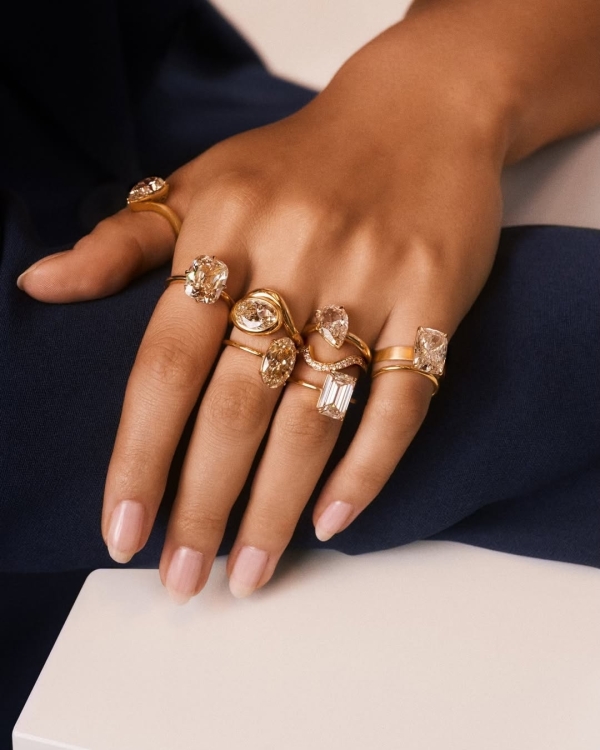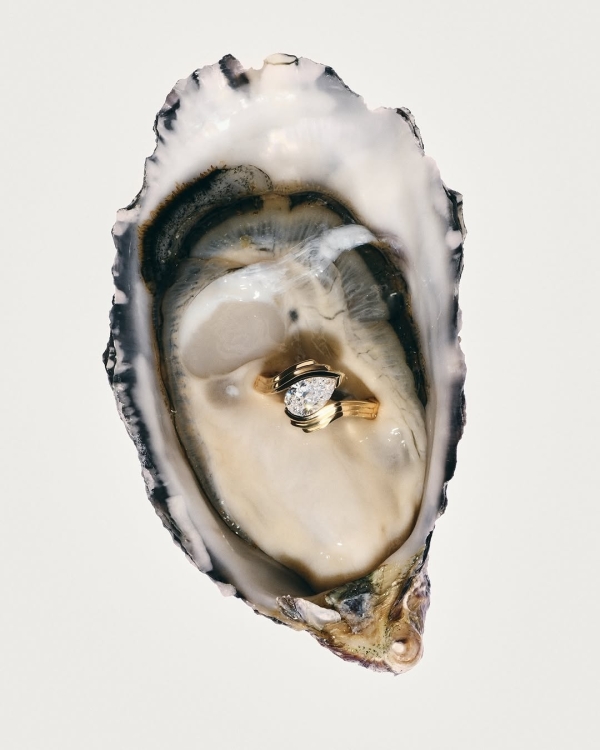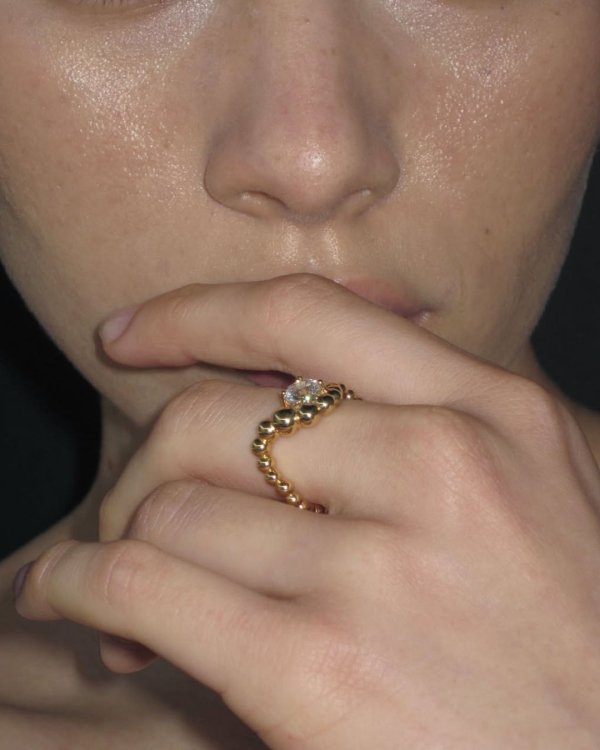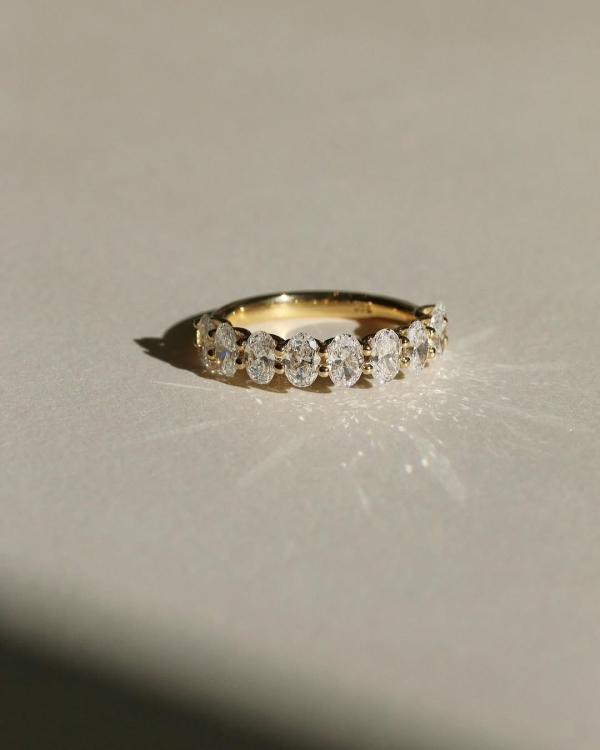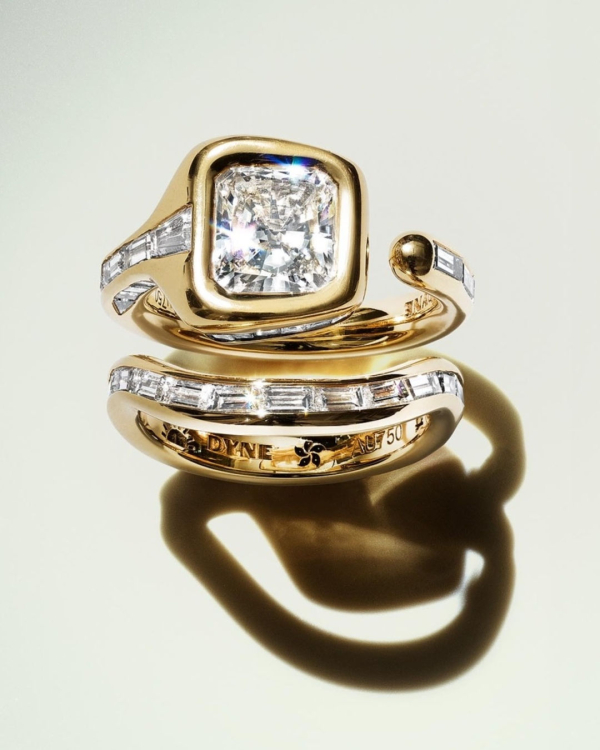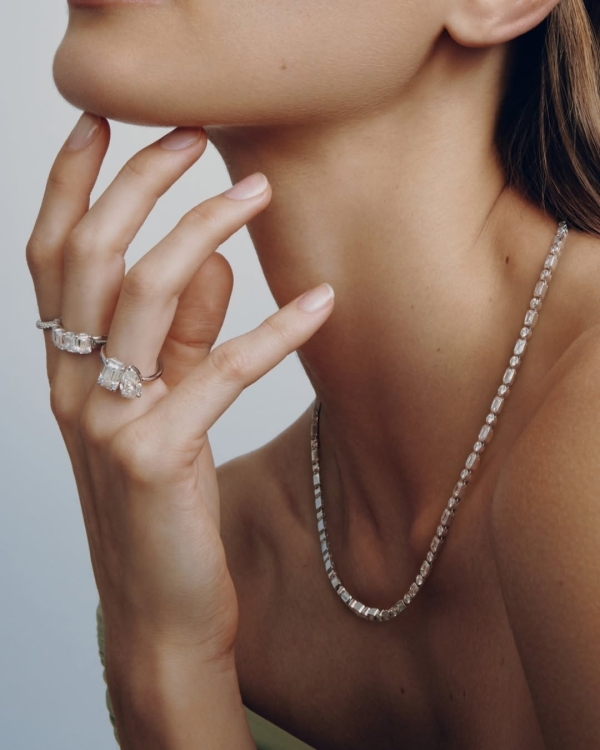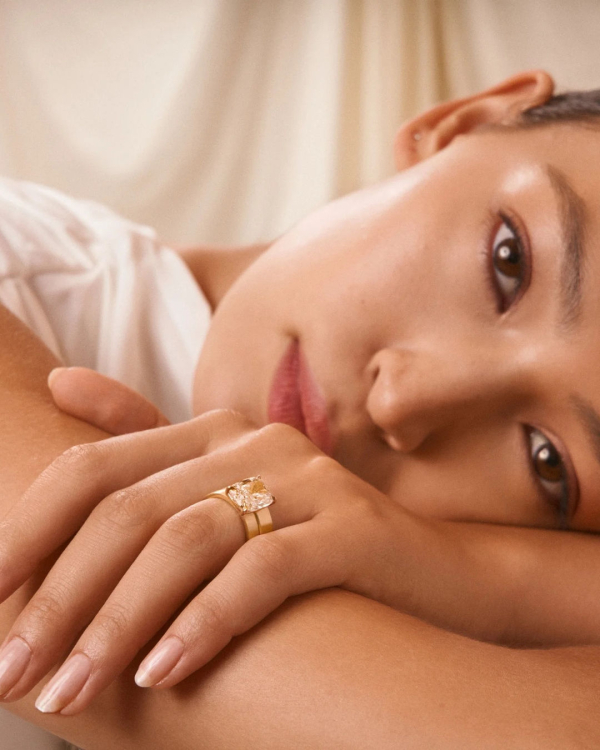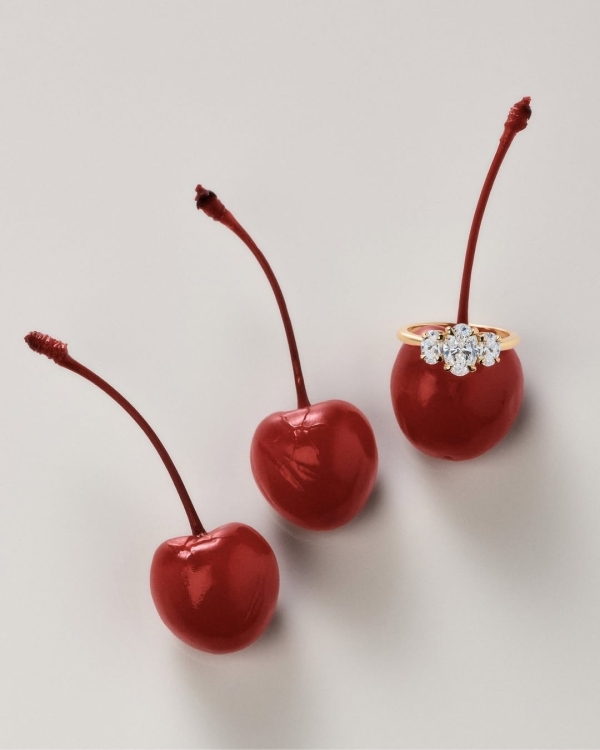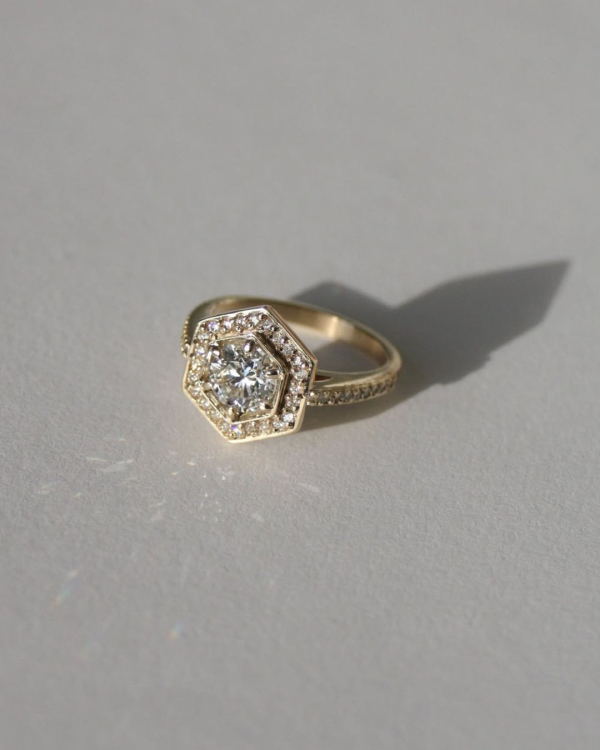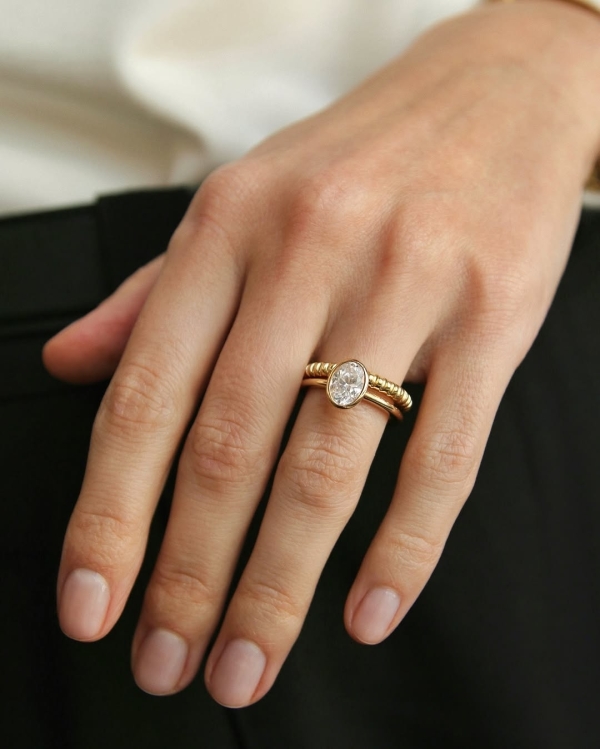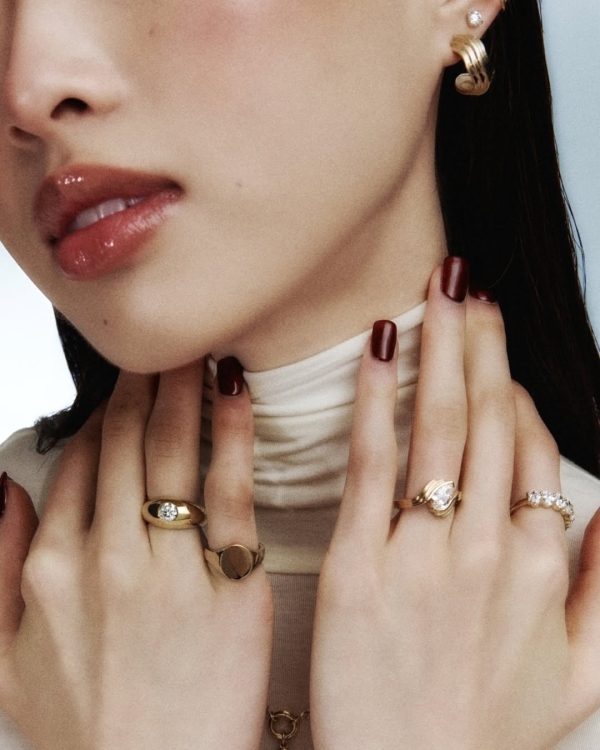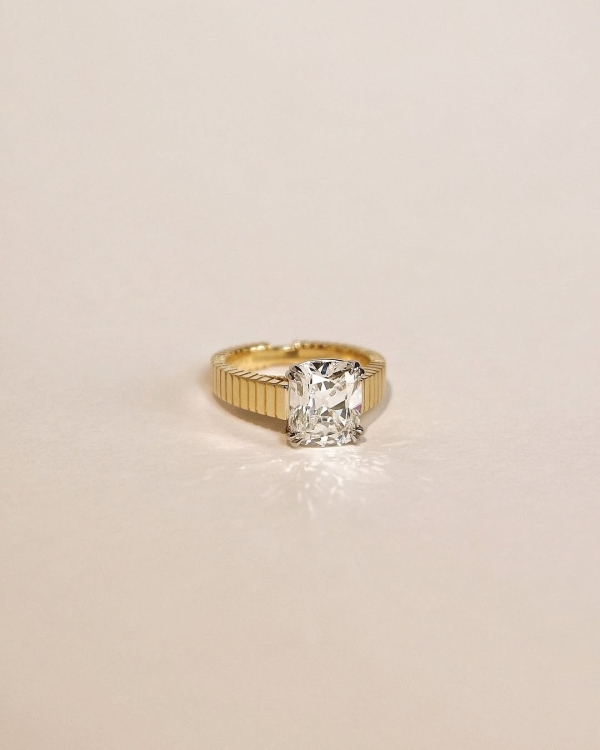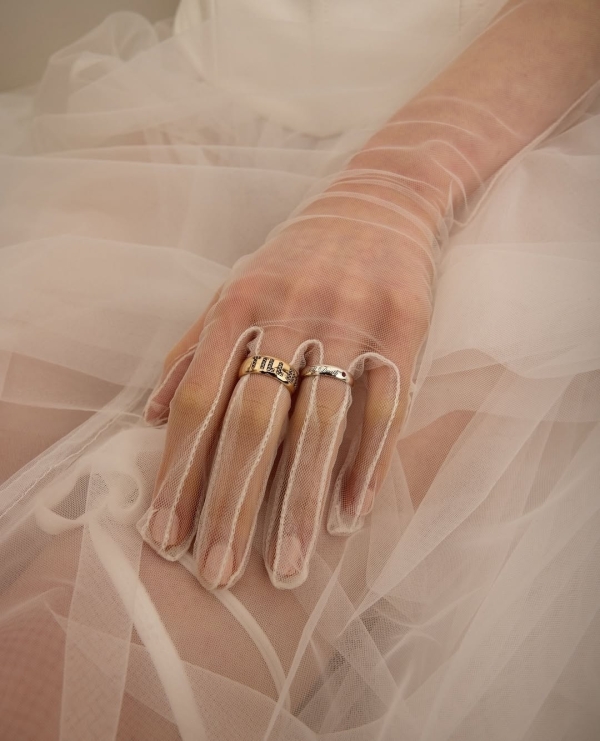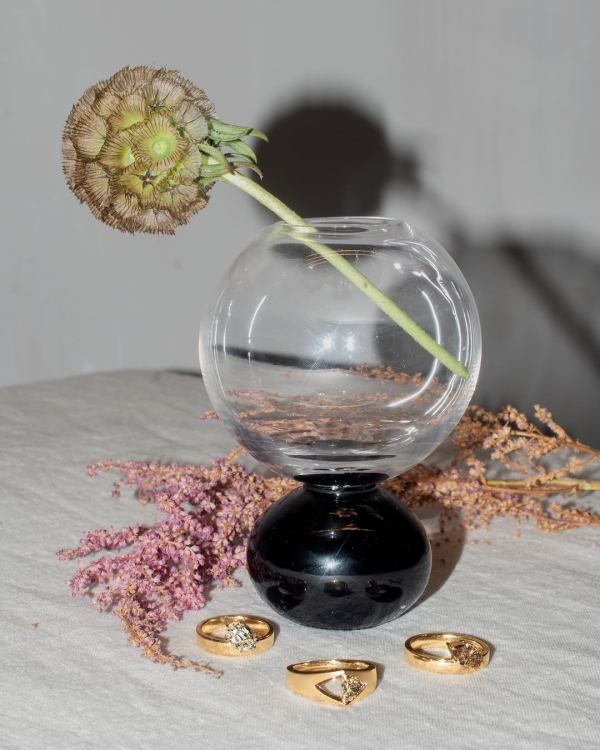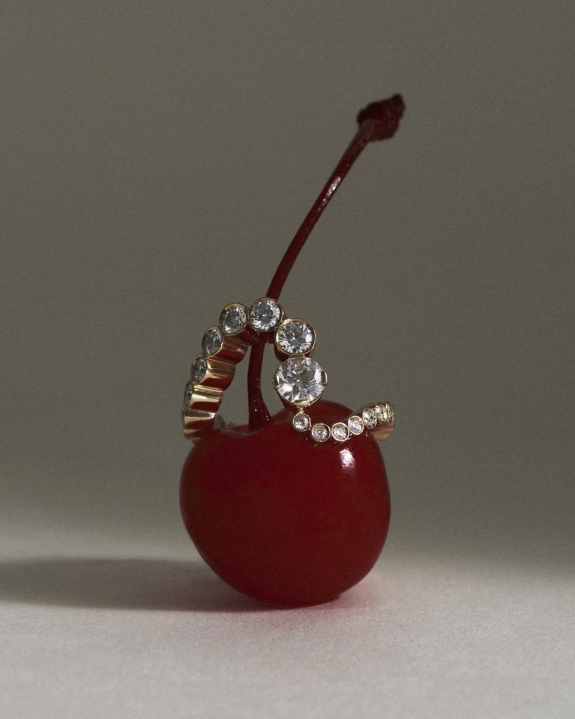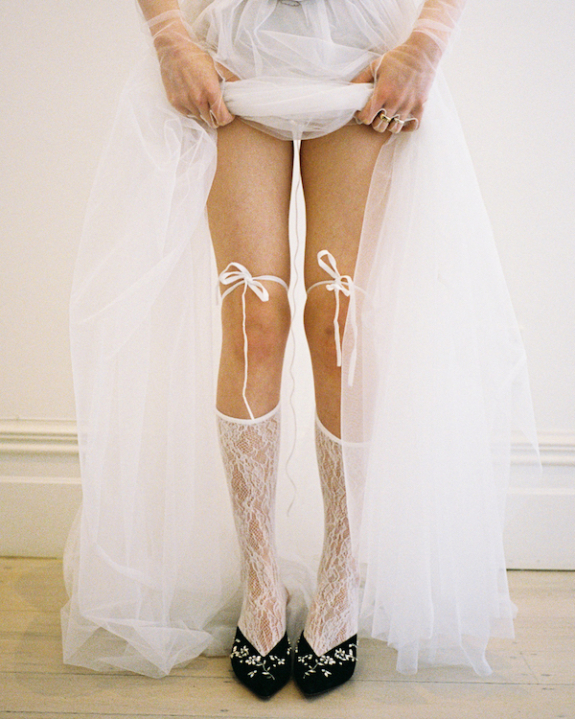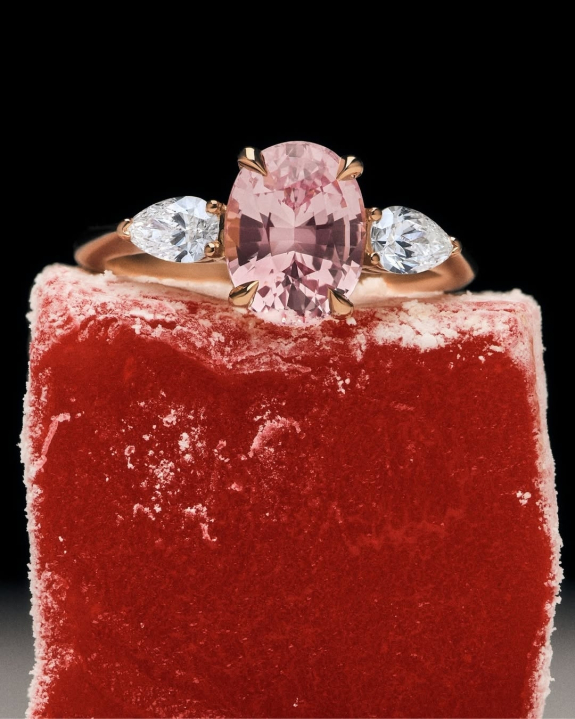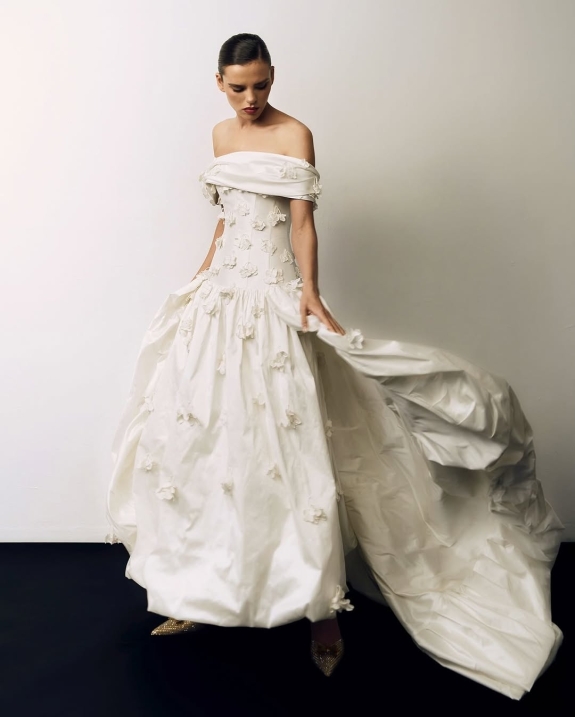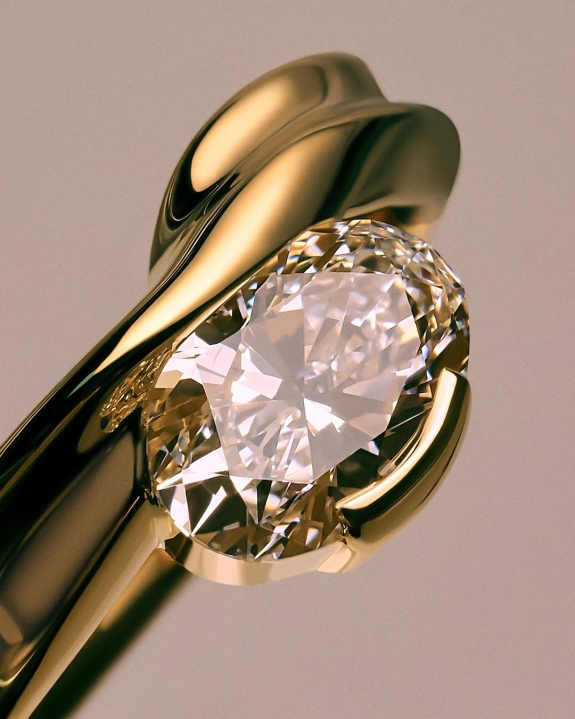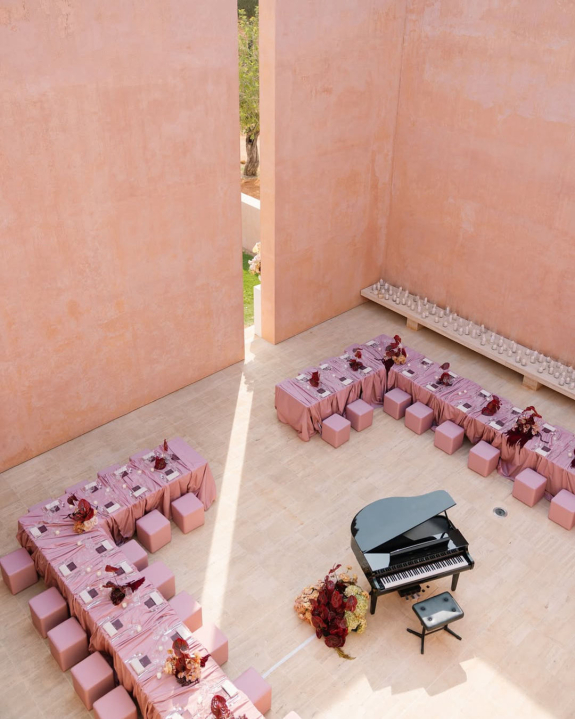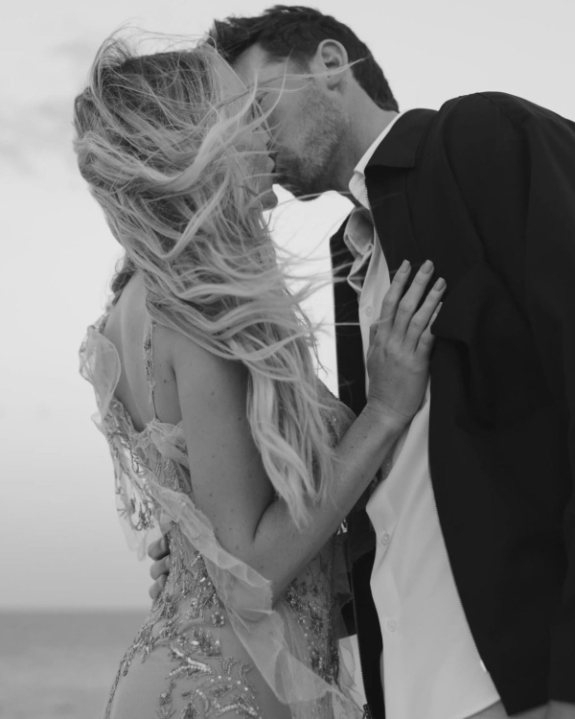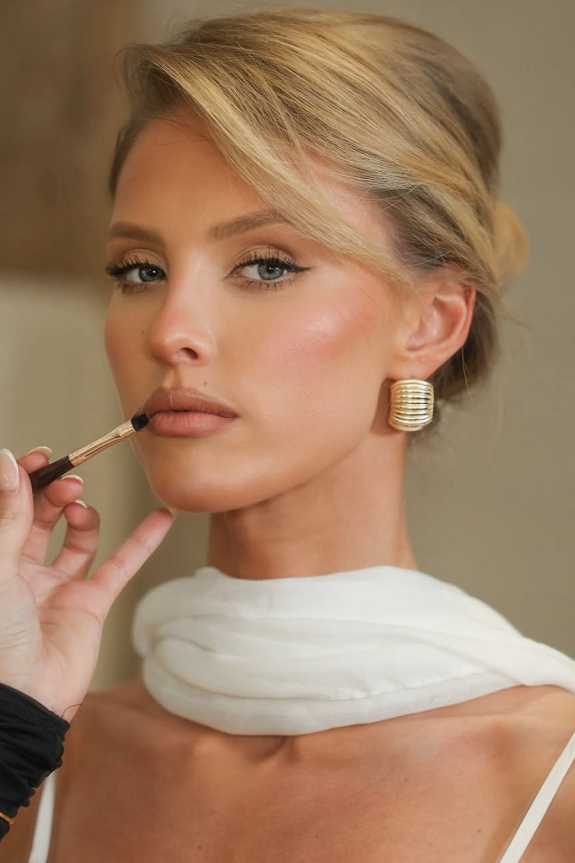An engagement ring is the first chapter in a lifelong love story and a symbol of commitment meant to last forever. It’s a legacy, crafted in precious metal and gemstones, designed to be treasured and handed down through generations. Choosing the perfect ring isn’t just about beauty; it's a significant investment that requires time, thought, and careful consideration. While it’s designed to be breathtakingly beautiful and built to last, ensuring it shines brightly for decades to come, making an informed choice is crucial to avoid expensive mistakes. To help you navigate this important decision, THE WED consulted with top jewelry brands to gather their expert insights. Here are 14 common ring-shopping missteps that could cost you thousands—errors that are easily avoided with the right knowledge and guidance.
Relying on Guesswork for Ring Size
Getting the ring size wrong isn’t just an inconvenience—it could mean an expensive and lengthy do-over. Anna Whiting of Australian jewelry brand Cushla Whiting, has seen it all, from well-intended guesses to inaccurate comparisons: "Take care in getting the ring size correct. This is important because, depending on the design chosen, there will be limitations as to how many sizes a ring can be resized. If you get it way off, it can involve a costly complete remake of the ring. The best thing to do, though, is to borrow a ring that your partner wears comfortably on one of their ring fingers and to size this using a ring sizing sheet."
Prioritizing Carat Weight Over Diamond Dimensions
Bigger isn’t always better! At least, not when it comes to diamonds. New York-based fine jeweler Megan Kothari, the founder of Aaryah, warns against obsessing over carat weight alone, as a diamond’s proportions can make all the difference. She elaborates: 'Many couples fixate on carat weight as the sole indicator of size, but a diamond’s dimensions—its length, width, and overall spread—play a significant role in how large it appears. Some cuts, like marquise and oval, look bigger than their carat weight due to their elongated shape. While carat weight is important, focusing on a diamond’s proportions can maximize its visual impact and even help you save money.'
Adding to this, VRAI, a fine jewelry brand known for its sustainable lab-grown diamonds, emphasizes the importance of understanding the 4Cs—carat, cut, color, and clarity. 'Many focus on carat weight when choosing a center stone, not realizing that cut plays an equally important role in how large a diamond appears on hand. Others feel that they must choose a flawless or colorless center stone, but for a yellow or rose gold engagement ring, near colorless might actually be preferable. Knowing which of the 4Cs you should prioritize for your particular ring and diamond shape can help you find the perfect selection while staying within your budget.'"
Ignoring Longevity for "Too Good to Be True" Pricing
A tempting bargain on an engagement ring can quickly turn into a costly regret. Based in Sydney, fine jewelry brand LeiL cautions that cutting corners on quality often leads to discoloration, frequent re-plating, and even structural failure down the line. LeiL's founder, Rebecca El Morr, further explains, "An engagement ring isn’t just any piece of jewelry, it’s meant to last a lifetime. Many low-cost rings are mass-produced or alloyed with cheap metals like copper, which can cause discoloration once the rhodium plating wears off—leading to frequent (and costly) re-plating. Worse, repeated plating gradually erodes the metal, increasing the risk of structural failure over time".
Instead, Rebecca recommends working with a jeweler who locally produces their rings using high-quality alloys to ensure lasting durability. She adds, "While all fine metals require occasional re-plating to preserve their shine, we advise doing so only once every three years to prevent excessive thinning of the band, which can lead to breakage and costly repairs. In between, your ring will retain its original metal color—never shifting to unexpected hues—while developing a beautiful, natural patina that enhances its character over time."
Not Insuring Right Away
Claire Hammon, creative director of the New Zealand-based fine jewelry brand Meadowlark, believes that delaying ring insurance is a risk you shouldn’t take. "We always recommend adding your ring to your insurance policy as soon as you purchase it. The risk of losing or misplacing your jewelry is high, and after spending thousands of dollars on such a special piece, it is a good idea to make sure it is insured," she advises.
Overpaying for a Brand Name
Focusing on a ring's design rather than the brand name can uncover unique treasures, often at a more attractive price. Sarah Ysabel Narici, founder of DYNE, a fine jewelry brand based in New York, wisely points out, "Jewelry should be about the artistry and the creativity—not necessarily a household logo inside a box. Some large luxury brands can charge significantly more, while independent designers can create something even more personal, with a focus on meticulous craftsmanship, custom-made just for you."
Forgetting that Diamonds are Not the Only Option
Diamonds aren't the only way to make your ring stand out. Sarah Ysabel Narici suggests, 'Diamonds may be more traditional, but you can achieve something just as interesting and unique with emeralds, sapphires, or less commercially used stones such as spinels or even paraibas
Choosing the Wrong Metal Color
Choosing the wrong metal color might seem like a small mistake, but it can lead to major headaches. Anna Whiting suggests paying close attention to your partner’s current jewelry choices to ensure you select the right shade. "Make sure you order the correct metal color—whether it's 18-karat yellow, rose, or white gold/platinum. Normally, you can find this out by looking at the jewelry your partner currently wears and taking some photos, or by asking a close friend of your partner. Although I truly appreciate the sentimental and romantic gesture of choosing an engagement ring for your partner as a surprise, it is becoming more of a trend these days for couples to come in together to make sure they get the ring right and also to enjoy the experience of choosing the ring together. The proposal will often come afterward as a surprise."
Matching Rings to Your Lifestyle Needs
When it comes to choosing a ring, the overall apperance isn’t the only thing that matters—lifestyle compatibility plays a key role too. "Many couples choose a ring based purely on aesthetics, without considering their lifestyle," notes Megan Kothari. "For example, soft gemstones like opals and emeralds are undeniably beautiful, but may not endure daily wear as well as diamonds or sapphires. If your heart is set on a softer gemstone, we’d recommend opting for a durable metal, like platinum, and a secure setting, like a bezel, if you live an active lifestyle."
Not Considering Your Overall Ceremonial Stack
Thinking about your ceremonial stack from the start can save you from awkward gaps and costly modifications down the road. Rebecca El Morr shares, "Many clients love the idea of stacking their ceremonial rings, but low-set engagement rings or certain setting styles may not accommodate a wedding band—resulting in an awkward gap or costly modifications later. Similarly, if the wedding band is too thick, it can rub against the engagement ring’s claws, gradually weakening them and potentially leading to stone loss or a full reset. We recommend working with a jeweler who can design both your engagement ring and wedding band together, ensuring a seamless fit from the start and eliminating the need for expensive adjustments later.'"
Not Having a Gallery Rail Under Your Diamond
Supporting your diamond properly is essential for both safety and durability. "It is important to make sure your main diamond is supported by a gallery rail and not just held by claws. Without the rail, your diamond is not fully supported, and you increase the risk of losing your diamond, which is likely the most expensive part of your ring," emphasizes Claire Hammon.
Getting Swept Up by Trends
It’s easy to get caught up in the latest trends, but when it comes to something as meaningful as your engagement ring, authenticity is crucial. "Don’t get caught up in trends. Social media is bad for this and can get people swept up in an idea that may not resonate with them in the long term," explains Anna Whiting. "I think it’s best to come in, try different designs on, and see what feels good. This also applies to gemstone choice. For example, at the moment, there is a trend for big diamond rings, because they are all over TikTok and Instagram, with lab diamonds being so affordable. But is this a ring that will feel like you in the long term? If it is, great! But I think coming into the showroom and seeing the different gemstone options is a more natural way to find the right ring for you."
Neglecting Resizing Flexibility in Band Design
Planning for the future is just as important as the present when selecting the ring design. Rebecca El Morr warns: "Eternity-set, ribbed, or textured bands cannot be resized, meaning a full remake may be necessary if the ring no longer fits over time. Since finger sizes fluctuate due to lifestyle, health changes or even pregnancy, we recommend talking with your jewelry designer about options to allow future resizing."
VRAI echoes this sentiment, stressing that some styles don’t allow for adjustments at all, "While most engagement rings and wedding bands can easily be resized up or down one ring size, certain styles like the popular Infinity Band or an Eternity Band cannot because they feature lab-grown diamonds or gemstones that wrap all the way around the band. Measure for your ring size before ordering any ring, but especially these styles—or choose a half-diamond style that will allow for easier resizing."
Not Servicing Your Ring Regularly
Taking care of your ring is an ongoing commitment, not just a one-time purchase. Claire Hammon recommends servicing your ring annually. "Like any investment, you need to take special care of your engagement ring. Occasionally, stones can become loose from general wear and knocks. This will be discovered and repaired when you have your ring serviced. Again, losing your main diamond could cost thousands to replace."
Skipping the Conversation on Ring Preferences
Starting with clear communication is the best way to avoid costly surprises. "The most important "C" is Communication—having an open conversation with your partner about their true preferences," reminds Megan Kothari. "Discuss dealbreakers, ring size, stone preference, and lifestyle to ensure the ring is not only stunning but also meaningful and practical for their everyday wear. Ensuring your partner will love the ring from the start can save you money in the long run, preventing the need to reset or replace it later if it doesn't match their lifestyle or preferences."
